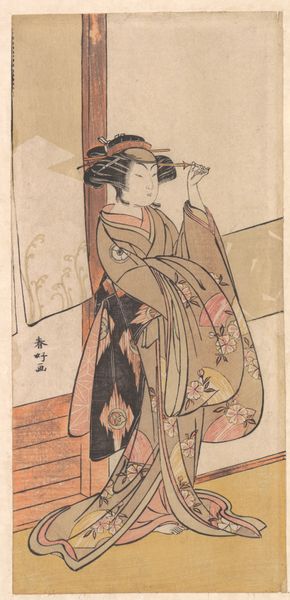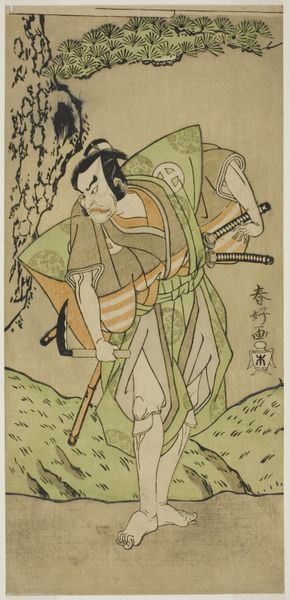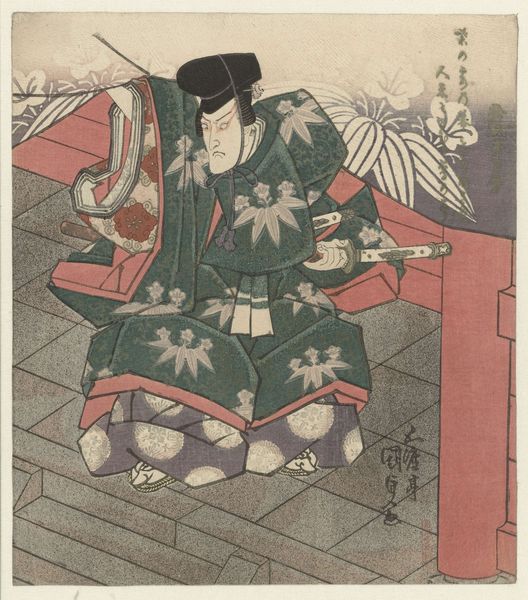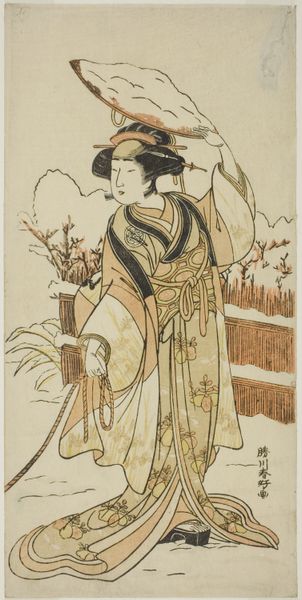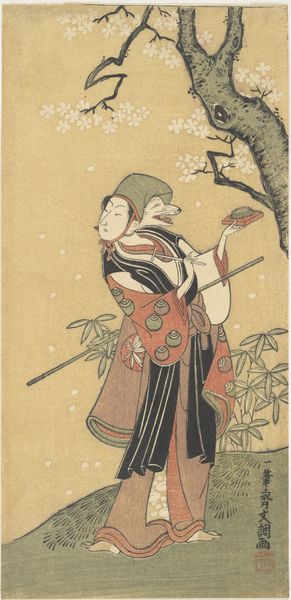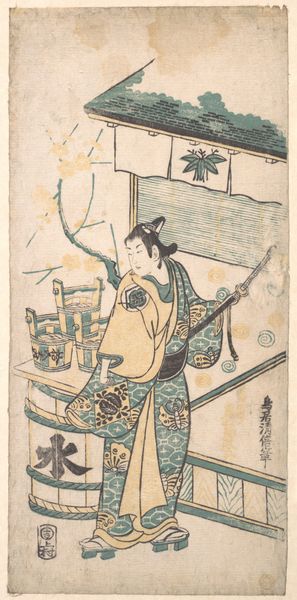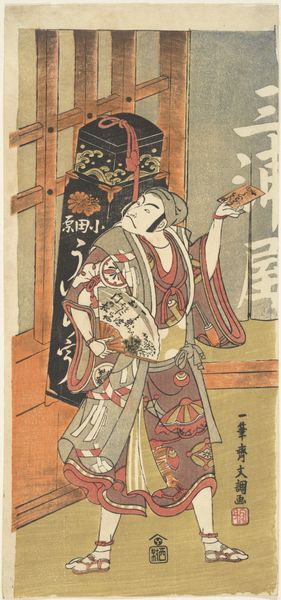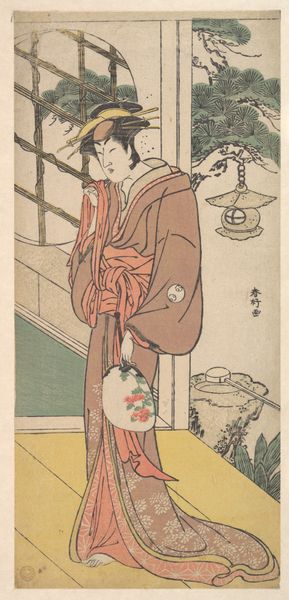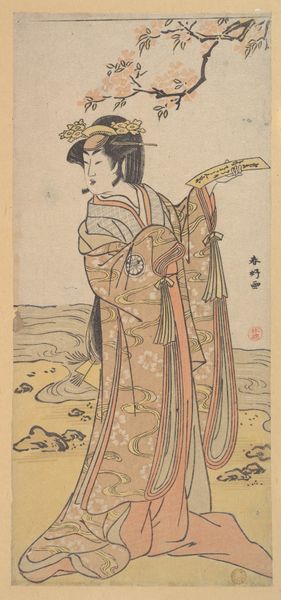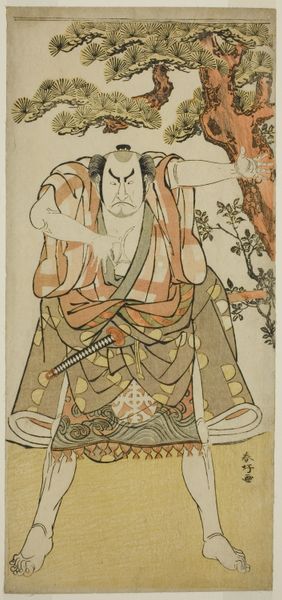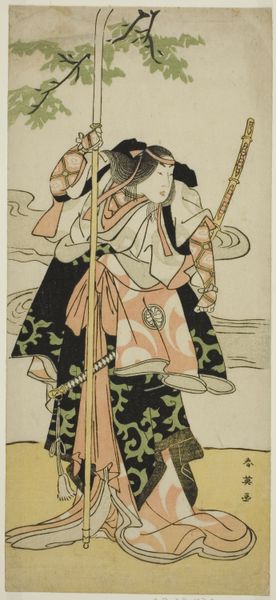
# print
#
asian-art
#
ukiyo-e
#
figuration
Dimensions: 11 3/8 x 5 1/2 in. (28.9 x 14.0 cm)
Copyright: Public Domain
Curator: This striking woodblock print, currently housed at the Metropolitan Museum of Art, offers us a glimpse into the world of 18th-century Japan. Dating between 1770 and 1790, it’s entitled "The Third Segawa Kikunojo as a Woman" and is attributed to Katsukawa Shunshō. Editor: My first thought? She looks utterly alone, almost melancholic, even with that ornate kimono and poised stance. The flute seems less like a joyous instrument here and more like a shield. Curator: That's an interesting reading, considering the context. Segawa Kikunojo was a celebrated onnagata, a male actor specializing in female roles in Kabuki theatre. So, already we’re dealing with constructed identity and the performance of gender. Editor: Exactly. The image speaks to that constructed-ness, but the eyes betray something, a vulnerability. I wonder about the societal pressures he faced. And I cannot help but notice, there are no stage elements around. The wall pattern feels like he is at home but... Curator: It is very intriguing. We can delve a bit deeper into the artistry and the sociopolitical climate surrounding the ukiyo-e tradition. The print medium itself was instrumental in democratizing access to art and celebrity culture at the time. And also let us mention the performativity of gender in Japanese theatre culture which provided an important space where these rigid binaries could be contested. Editor: A contested space indeed. Looking closely, you can see subtle clues about that tension in the lines, the colors. Everything feels delicate, intentional, yet there's also a hint of defiance. Like a tightrope walker balancing identity and expectations with incredible poise, but maybe...just maybe...yearning to jump off. Curator: Precisely. Shunshō's work invites us to contemplate not only the aesthetics of a bygone era but also the intricate web of gender, performance, and identity politics woven into the fabric of the Edo period. The question then is: can such historical images assist the creation of safer space and practices nowadays, despite their inevitable lack of modern sensitivities regarding identity performativity? Editor: Maybe by fostering more honest and personal storytelling of such figures? Either way, it's a reminder that representation matters and identity is much more nuanced, much more complex than we often assume. This will certainly stay with me.
Comments
No comments
Be the first to comment and join the conversation on the ultimate creative platform.
